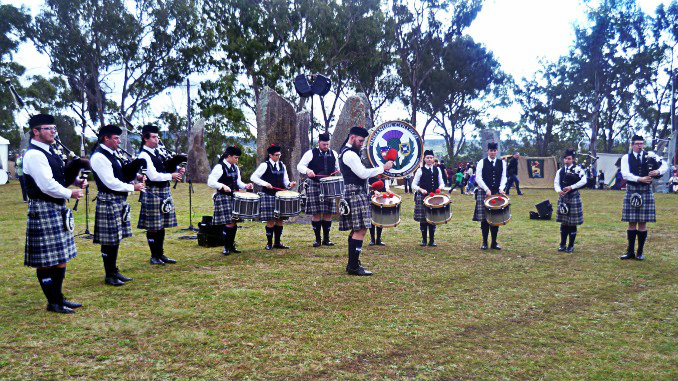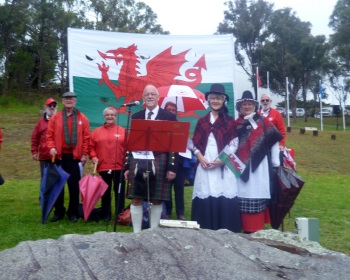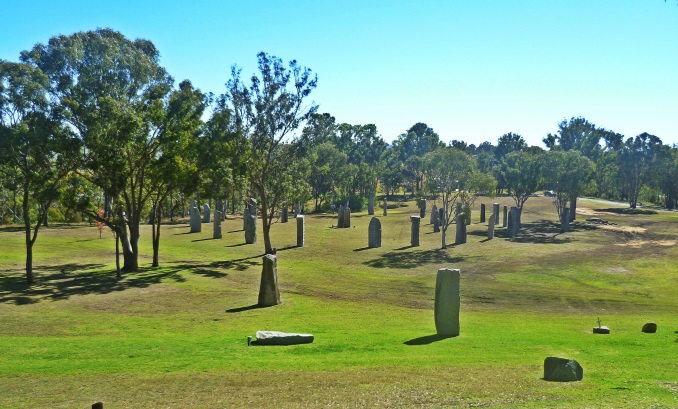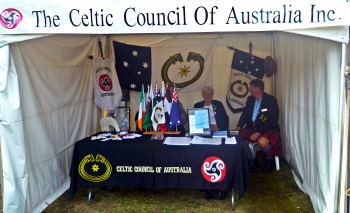Glen Innes 2015 Australian Celtic Festival Resounding Success

This year saw the 23rd Australian Celtic Festival at Glen Innes. Record numbers flocked to the New South Wales town of Glen Innes to experience this very unique festival celebrating the music, song, dance and culture of all the Celtic Nations. The main events of the festival took place between the 30th April to 3rd May. Glen Innes is a town known for its friendly people and welcoming atmosphere. Celts from all over Australia celebrated along with locals and tourists from abroad. A street parade, concerts and events taking place all over Glen Innes demonstrate how much this warm hearted town has embraced this wonderful festival of all things Celtic. Each year there is a featured Celtic Nation and this year it was Wales (Cymru). Next year 2016 will celebrate the Isle of Man (Mannin).

The main festival itself took place at the site of the Australian Standing Stones. This site has been declared as an Australian National Monument. The remarkable Standing Stones are a testament to the importance of the Celtic people in Australian life and history. In the Celtic lands of north west Europe standing stones are a feature of the landscape. Of huge significance to the ancient ancestors of the peoples of Brittany (Breizh), Cornwall (Kernow), Isle of Man (Mannin), Ireland (Éire), Wales (Cymru) and Scotland (Alba) they were an essential part of ceremonial and spiritual life. They were aligned to reflect significant features of the landscape, the stars and the winter and summer solstices.
The creation of the Australian Standing Stones at Glen Innes came some 3,500 years after the originals. They were erected as a monument to Australia’s Celtic Pioneers. The three central stones are:
- The Australia Stone representing Australia and the link between the new and old worlds.
- The Gaelic Stone represents Scotland, Ireland and Isle of Man.
- The Brythonic Stone represents Wales, Cornwall and Brittany.

The general outline of the stones was inspired by the Ring of Brodgar in Scotland's Orkney Isles (Scottish Gaelic: Arcaibh). The Australian Stones comprise 40 granite monoliths. The standing stones have a circle of 24 stones representing the hours of the day, four cardinal stones marking true north, east, south and west and seven stones marking the longest and shortest days of the year at the winter and summer solstices.When looked at from above, the four cardinal stones and Melling family stone in the circle form the Southern Cross; the constellation of stars that can be clearly seen from the southern hemisphere. A Celtic Cross can also be seen when looking down at the four cardinal stones within the 24 stone circle. There are stones representing the Celtic nations of Brittany, Cornwall, Wales, Ireland, Isle of Man and Scotland.

As Festival Chairperson Lara Gresham pointed out in her words of welcome “This Stone Circle is not just a venue for markets, music and dance, but also for Clans and celtic Societies from all over Australia to perform their traditional ceremonies”. The Stones form an integral part of the ceremonies that take place over the Festival period. Including when the flags of the Celtic Nations, the flag of the Celtic Council of Australia, the Aboriginal flag and the Australian National Flag are raised and lowered at the beginning and end of the festival on “Tynwald Hill” which overlooks the stone circle. The Aboriginal flag is flown throughout the ceremonies and recognises the Ngabaral (also Ngoorabul, Ngarrabul, Ngarrbal) people as the traditional Aboriginal custodians of the Glen Innes area, having lived there continuously for thousands of years. The Ngarabal name of the township of Glen Innes is “Gindaaydjin”, meaning “plenty of big round stones on clear plains”.
The lowering of the flags was done under the supervision of the Chair of the Australian Standing Stones Management Board Judi Toms. This drew this years festival, celebrating Wales (Cymru), to a close with the flag of the Isle of Man (Mannin), next years featured nation, being handed to the Convenor of the Celtic Council of Australia Margaret Sharpe, also a former President of The Manx Society of New South Wales.
- Pan-Celtic
- English
- Log in to post comments






